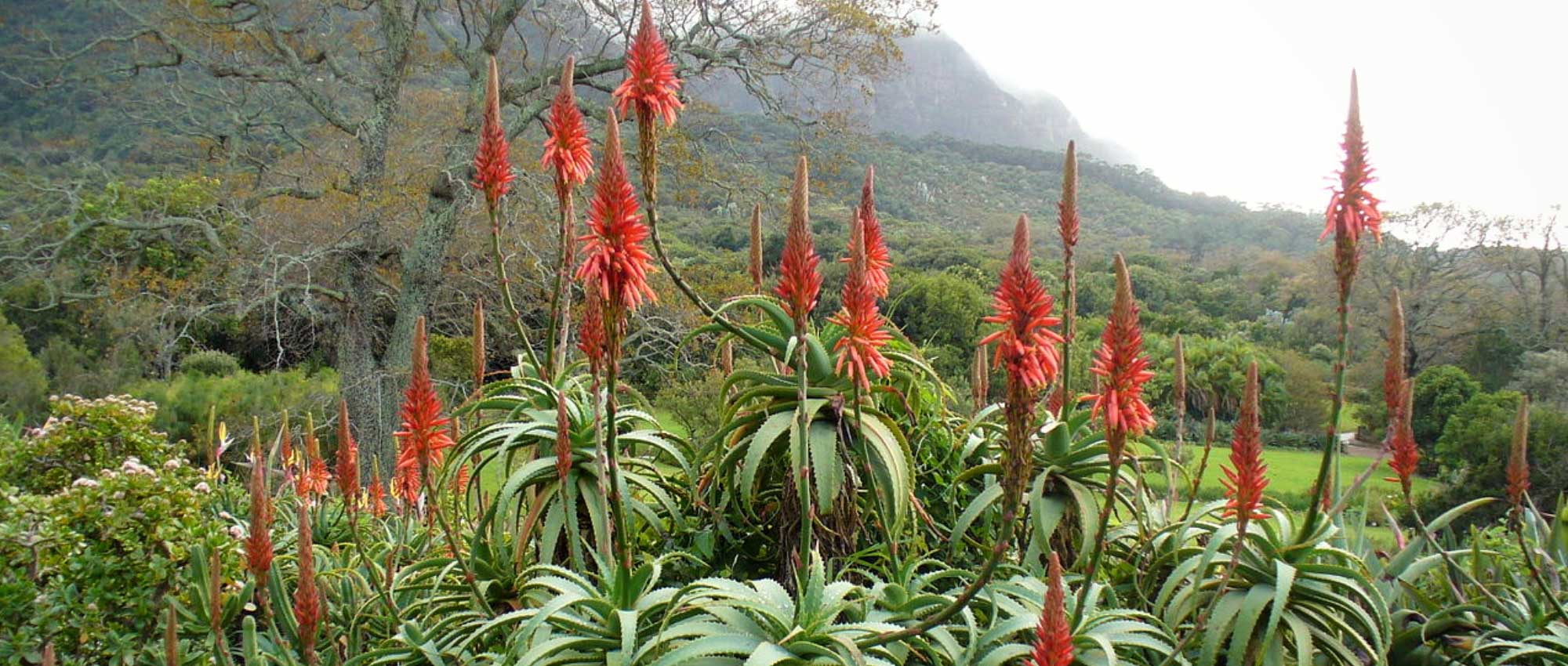
Aloes: planting, growing and care
Contents
Aloes in a nutshell
- Aloes are very attractive succulent plants forming rosettes of long fleshy leaves.
- When they flower, they produce superb spikes in vivid colours: yellow, orange or red.
- Aloe vera and Aloe arborescens are excellent medicinal plants
- They need warmth and tolerate drought very well
- They are easy-to-grow plants
- They are frost-tender but can be grown in pots and brought indoors for winter
A word from our Expert
Aloes are succulent plants (fleshy plants), adapted to heat and drought, easily recognisable by their rosettes of thick, fleshy leaves. Most famously Aloe vera, whose gel in leaves is consumed and is renowned for its medicinal properties and many benefits. However, many other species exist, such as Aloe arborescens, aristata or ferox…
Aloe has striking foliage and beautiful colours, making it a popular indoor plant. All the more so as it requires little maintenance. Although aloes are generally not very hardy, some species can tolerate down to -10 °C and can therefore be planted outdoors in regions with a mild climate. They have few requirements, whether in watering, feeding or upkeep… and are therefore very easy to grow, provided it does not get too cold.
If you live in southern France, in a mild climate where it rarely freezes, don’t hesitate to plant them in the ground! Elsewhere, it is better to grow them in pots and bring them under cover in winter. Aloe aristata can nevertheless withstand -10 °C!
Botany
Botanical data
- Latin name Aloe sp.
- Family Xanthorrhoeaceae
- Common name Aloe
- Flowering often in winter or spring
- Height between 15 cm and 4 m
- Exposure bright, full sun except for Aloe vera and Aloe aristata
- Soil type very free-draining, rather poor.
- Hardiness not hardy, except Aloe striatula (-12°C) and Aloe aristata (-10°C).
Aloes are typically succulent plants (or succulent plants), bearing fleshy leaves often arranged in rosettes. The best known is Aloe vera, prized for its medicinal properties, but aloes form a large group of about 560 species. They are xerophytic plants: adapted to drought.
Aloe originates mainly from Africa. Greatest diversity of species is in South Africa and Madagascar. A few species also grow in India, the Arabian Peninsula and islands of the Indian Ocean (Réunion, Comoros, etc.). Aloes are mostly found in arid areas, which explains their adaptation to drought by producing thick tissues capable of storing water.
Their name comes from Greek ἀλόη, aloê. Species name “vera” means “true”, “genuine aloe”. This plant was already used in Antiquity by Greeks and Egyptians for its medicinal virtues. In French, Aloe vera is also called “Aloé des Barbades” (Latin synonym Aloe barbadensis). Aloe vera has been cultivated for a long time and has naturalised in several regions of the world.
Aloes belong to the family Xanthorrhoeaceae (1,236 species), alongside other plants sometimes grown in gardens: asphodels, Eremurus, daylilies, Kniphofia, Phormium… This family groups many plants from Southern Hemisphere, not always very hardy, which often bring an exotic touch to borders. Aloes were formerly placed in family Asphodelaceae and were long classified among Liliaceae. Aloes are sometimes confused with Agaves, which also form large rosettes of thick, elongated leaves.
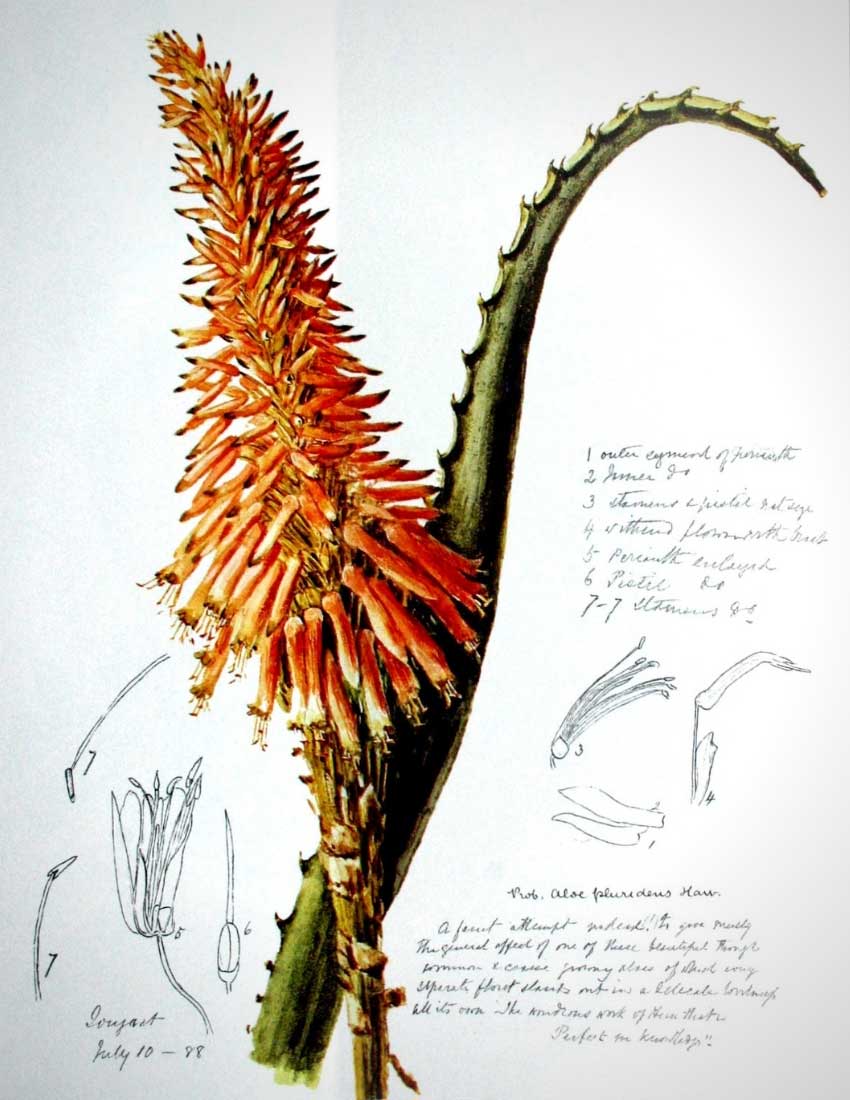
Aloe arborescens: botanical illustration
Many aloes have a rosette foliage growing at ground level, without stems. These aloes can be very small, such as Aloe aristata, which hardly exceeds 15 cm in height. Conversely, there are arborescent species: Aloe arborescens and Aloe marlothii can reach up to 4 m. Aloe arborescens forms very large, ramified clumps and can become very large. There are even climbing species, such as Aloe ciliaris!
When they flower, aloes produce impressive flower spikes. They consist of numerous flowers in bright, luminous shades. They are often yellow, orange or red. Flowering resembles that of kniphofias. Spikes are borne at the top of upright stems that can reach up to 1 m tall! Flowers open progressively from the base of the spike upwards. Those at the base tend to nod towards the ground.
Flowers are tubular, thin and elongated. They are small, only a few centimetres long, often 3–4 cm, and rich in nectar. Flowers comprise six tepals (sepals or petals of similar form) fused into an elongated tube. Inside are six stamens (male parts bearing pollen) and a style (female part).
Aloes generally flower in late winter or spring, but depending on species and growing conditions, some can also flower in summer or autumn. Unlike agaves (which bloom only once in their life and then die), aloes can flower every year. However, it is rare to see them flower when grown indoors or under rather cool climate.
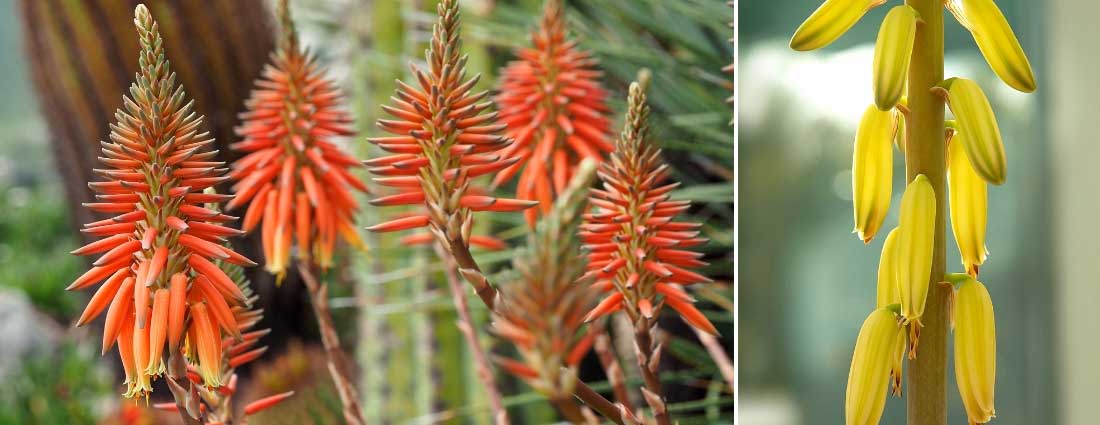
Flowering of Aloe succotrina and Aloe vera.
Aloe vera tend to form clumps over time, producing offsets. They can even form large colonies.
Aloes have long, thick, fleshy leaves, fairly supple. These allow water storage, making these plants very drought-tolerant. Leaves are broad at the base where the rosette forms and taper gradually to the tip. Leaves of some aloes are very long: in Aloe ferox, for example, they can reach up to 1 m. Aloe foliage is often dentate, more or less spiny along the leaf lamina margin… which gave rise to names such as Aloe ferox and A. spinosissima.
Leaves are arranged in rosettes, all directed outwards, radiating from the centre. Those of Aloe polyphylla are beautifully inserted in a spiral! In some species, leaves are distichous when young, then form a rosette later. Often rosettes are at ground level (plant not really stemmed), but there are also arborescent species that bear rosettes at tips of branched stems.
Depending on species, leaf colours of Aloe range from pale green to blue-grey. A variegated species exists: Aloe variegata, with irregular white striations! Aloe cameronii, for its part, is notable for its red tones. Generally, aloe leaves also tend to turn red under direct sun and drought.

Leaves of Aloe brevifolia, Aloe polyphylla (photo Sam) and Aloe vera
Their leaves enable aloes to perform photosynthesis and to store water and minerals. These are the plant’s reserves, making it very resistant to drought. Leaves of Aloe vera contain a translucent pulp used for medicinal purposes.
Aloes have evergreen foliage that does not disappear in winter.
Roots of Aloe vera are shallow but spreading. For cultivation, choose a pot rather wide rather than deep.
Aloes produce elongated capsules that open at ripeness to release seeds.
Although aloes are not very hardy, a few species can withstand relatively low temperatures (down to −10 °C): Aloe striatula and Aloe aristata, which can be planted outdoors in mild climates. Aloes can also be grown in pots and moved under cover for winter. Some species are grown as houseplants; in that case, try to maintain temperature around 20 °C. Indoors, aloes do not like temperatures below 5 °C.
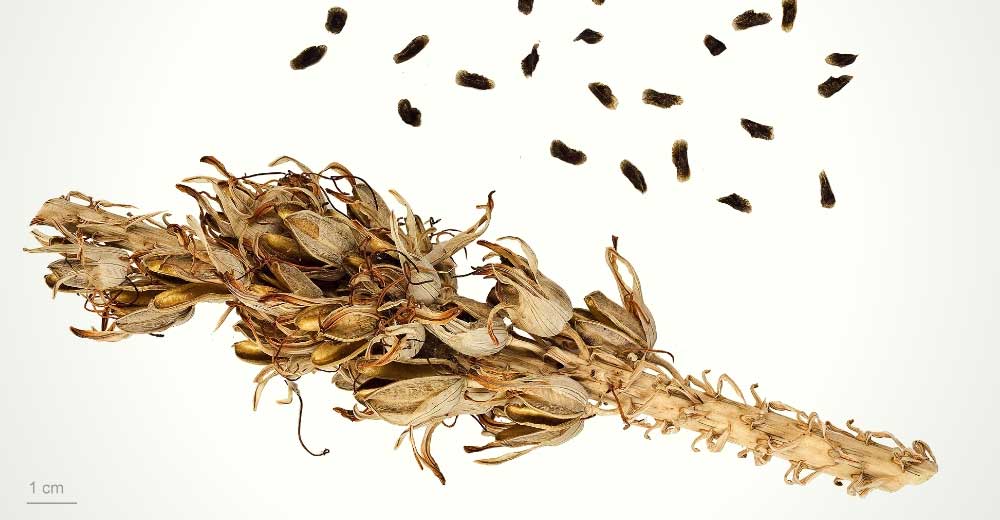
Fruits and seeds of Aloe vera
Read also
Cordyline : to plant, to grow, to careMain Aloe varieties
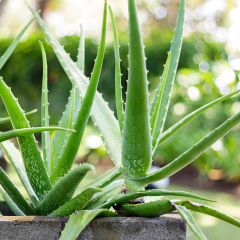
Aloe vera
- Flowering time August, September
- Height at maturity 60 cm

Aloe aristata
- Flowering time July, August
- Height at maturity 30 cm
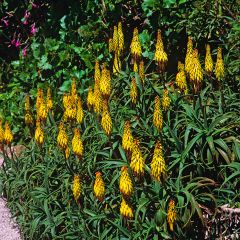
Aloe striatula
- Flowering time June, July
- Height at maturity 1,50 m
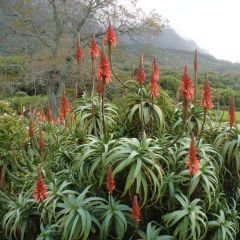
Aloe arborescens
- Flowering time March to May
- Height at maturity 1,50 m
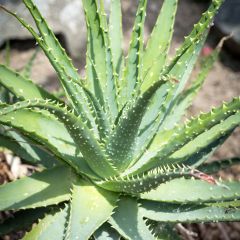
Aloe x spinosissima
- Flowering time April to June
- Height at maturity 60 cm
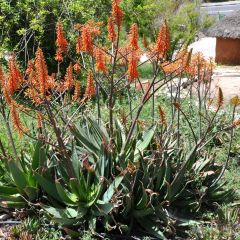
Aloe brevifolia
- Flowering time April to June
- Height at maturity 20 cm
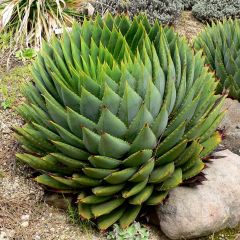
Aloe polyphylla
- Flowering time July, August
- Height at maturity 30 cm
Discover other Aloe
View all →Available in 1 sizes
Available in 1 sizes
Available in 1 sizes
Available in 1 sizes
Available in 2 sizes
Available in 1 sizes
Available in 3 sizes
Available in 1 sizes
Available in 1 sizes
Available in 1 sizes
Planting aloe
Where to plant?
Aloes are African plants that appreciate heat and drought. Most species will thrive in sun. Indoors, choose a bright spot. However, avoid full sun for Aloe vera, which may cause foliage to yellow.
Aloes dislike excess moisture and prefer a strongly draining substrate, sandy, stony… If your soil tends to retain water, grow aloes in pots, or create a rockery on an elevated mound.
Aloes appreciate poor soils. No need to add fertiliser or compost! They grow naturally on arid, rather ungrateful soils.
As aloes are quite frost-sensitive, we recommend choosing a sheltered spot, protected from cold winds… or growing them in pots that you will bring indoors in winter, into a conservatory or greenhouse. You can, however, put them outside in summer. The hardiest aloes, Aloe aristata and Aloe striatula, can be planted in open ground if you live in a region with a relatively mild climate.
Aloes are perfect for rockeries! They fit easily into Mediterranean-style gardens and also allow creating compositions in large terracotta pots with sedums, sempervivums, echeverias…
When to plant?
Plant aloes around May, when risk of frost has passed. If you grow them in pots, plant and repot in spring as well.
How to plant?
If planting in open ground:
- Start by preparing the ground. Feel free to create a mound or a rockery to place the Aloe in a well-draining spot.
- Dig a hole large enough.
- You can add coarse sand or gravel to improve drainage. Then place some potting compost.
- Place your Aloe.
- Fill substrate around it and firm down. Cover the roots, but avoid burying the foliage!
- Water lightly, without excess.
For pot planting:
- Choose a pot large enough (not necessarily deep), preferably terracotta
- Place a layer of gravel or clay pebbles
- Then add a well-draining substrate to the pot. You can use cactus compost, or make your own substrate by mixing potting compost with garden soil and sand (or perlite).
- Plant your Aloe.
- Fill substrate around it.
- Firm down with the flat of the hand.
- Water.
- Then place the pot in a bright spot.
→ Learn more about growing Aloe in a pot
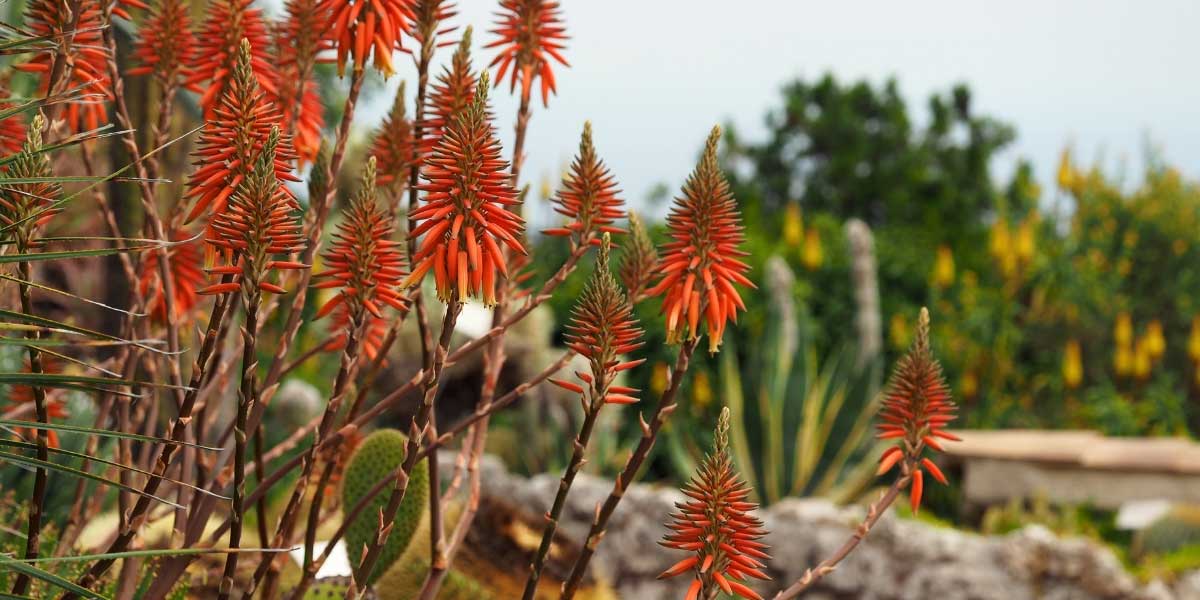
Aloe succotrina
Read also
Agave: planting, growing, and caring forCaring for aloes
Aloes require very little maintenance. As long as it does not get too cold, they are easy to grow and need little care.
They are drought-resistant plants that store water in their thick leaves. They therefore do not need frequent watering… even less if planted in open ground. Wait until the substrate is completely dry before watering, and above all avoid standing moisture, otherwise roots may rot. You can water once a week (or less) during growth, but reduce watering in autumn and winter.
If you grow your aloe in a pot, you can apply some fertiliser in spring and summer (at most once a month). Don’t overdo it, because Aloe grows well in fairly poor substrates.
If you grow them indoors, don’t hesitate to put your aloes outside for the summer. However avoid placing them directly in full sun; acclimatise them gradually. If exposed to sun too quickly, the leaves of Aloe vera may turn brown.
You can repot your aloes in spring, every two to three years. Place them in a slightly larger pot, using potting compost mixed with perlite or sand, for example.
As indoor plants, aloes prefer temperatures around 20 °C throughout the year (and about 10–15 °C in winter). In any case, avoid temperatures falling below 5 °C.
Regarding pests, for aloes grown indoors or under glass, beware of mealybugs. They form small clusters with a powdery white appearance. They extract sap, which weakens the plant and favours the development of sooty mould. To get rid of them, you can use black soap diluted in water. Aloes may also be affected by armoured scale. Aphids can also attack aloes; treat with black soap.
Aloes are most at risk from excess moisture, which may cause root rot.
Foliage can also be burnt if the plant is moved too quickly into direct sun! If you want to put it outside, acclimatise it gradually.
→ Learn more about Aloe diseases and pests in our care sheet
Propagation
To propagate aloes, the simplest method is to remove offsets that appear beside the main rosette. It is also possible to sow seeds.
Removing offsets
With time, aloes tend to produce offsets around the young plant, allowing clumps to expand. You can divide them at the end of spring.
- Prepare a pot with a well-draining substrate.
- Remove soil around offsets to expose their base, then separate them from the young plant. Use a knife if necessary.
- Leave the wound to dry for 24 hours before replanting in soil.
- Then replant the offsets. Place the roots well into soil, but not the foliage! You can gently firm the soil around them.
- Water lightly.
- Place the pot out of direct sun and away from frost.
Association
Aloes are perfect for creating an exotic garden. Plant them alongside the striking foliage of Phormium, Agaves and Yuccas, together with a few Opuntia. To add colour, also include flowering plants such as Kniphofia, Eucomis, Crocosmia and Agapanthus.
They also find a place in a rock garden. Create a raised bed with a few rocks and gravel. Then plant sedums, grasses (Stipa, Carex…), Cerastium tomentosum, Iberis, phlox, Geranium renardii, houseleeks… You can also add a few Eryngiums for the graphic impact they provide.
You can also create a container arrangement, featuring sedums, houseleeks and saxifrages. Choose a terracotta pot wide enough and fill it with a well‑draining substrate. Then plant aloes together with other small rosette-forming or mat-forming plants. You can also add some Muehlenbeckia, which will tumble over the pot’s edge. If you plan to bring the pot indoors in autumn and put it back out in spring, you can include a few more tender plants: small cacti, echeverias, Haworthia, Crassula…
You can create a Mediterranean-style garden. Compose a rather dry, rocky bed typical of the South, incorporating cacti, euphorbias, Tulbaghia, cistus, helianthemums, Armeria maritima, Alyssum… Choose plants that fare well in arid, poor soils. Favour those with a cushion or mat-forming habit, and add some grasses and lavenders for volume. Use aloes to create a dry, low‑maintenance garden with other plants you won’t need to water.
→ Discover other ideas for pairing with aloes in our advice sheet!
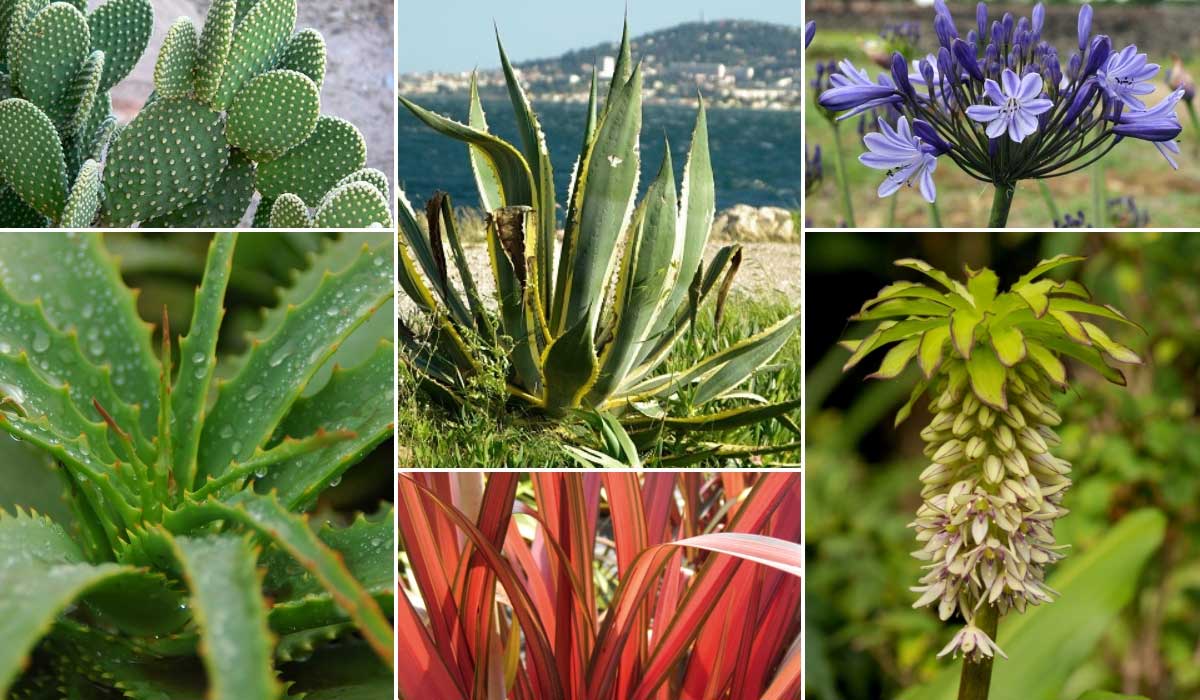
Aloes easily fit into exotic-style gardens! Here, Opuntia microdasys, Aloe vera, Agave americana ‘Variegata’, Phormium ‘Rainbow Maiden’, Agapanthus ‘Rosewarne’ and Eucomis bicolor (photo Wouter Koppen – iBulb)
Did you know?
- Agaves or Aloes?
Over the course of evolution, agaves and aloes have adopted very similar forms, even though they do not belong to the same family and do not share the same geographical origin (Agaves mainly come from the United States and Mexico, while Aloes are mostly African). Both groups have thick, elongated leaves arranged in a rosette, which makes them particularly adapted to drought. They can therefore be fairly easily confused. However, Agave leaves are fibrous, rather leathery, and sometimes bear sharp, pointed thorns (the leaves often end in a very fine point), whereas Aloe leaves are fleshy (pulp-filled in Aloe vera), much more flexible, with rather soft thorns. As for flowering, Agaves are semelparous, flowering only once in their life and then dying. They then produce a large, very tall flowering stalk, with flowers often yellow or cream-coloured. Aloes, on the other hand, can flower every year and produce flower spikes in bright colours — yellow, orange or red — usually less than a metre tall.
- Properties
Aloe vera is renowned for numerous medicinal properties. It promotes healing, is effective against burns, sunburn, irritations and skin problems in general. It is also said to be antioxidant, detoxifying, to strengthen the immune system, and to contain many minerals and vitamins. Its leaves, however, contain aloin (potentially toxic): the juice must be extracted properly to avoid ingesting it, by separating the gel from the plant juice.
Less well known, Aloe arborescens is also medicinal. Whole leaves are used, with skin (unlike Aloe vera). It is antioxidant, stimulating, and reputed to be effective in fighting cancer. Moreover, it reportedly contains much less aloin than Aloe vera.
Both plants can be used internally and externally.

Aloe vera leaves, cut to extract the juice
Useful resources
- Discover our range of aloes!
- To pair aloes – Exotic garden feel
- Don’t hesitate to visit Èze’s exotic garden, on the Côte d’Azur… you’ll find many beautiful specimens of aloes, agaves and cacti there.
- Article by Pierre on our blog – Mediterranean plants: where do they really come from?
- Discover Aloe Safari Sunrise, our new arrival and 2020 favourite!
- How to choose your Aloe? Follow Alexandra’s advice
- How to propagate aloes easily? and How to propagate Aloe vera? We’ll tell you everything!
- Advice sheet: to grow Aloe in a pot and how to grow Aloe vera?
- Find Gwenaëlle’s tips in Beauty, cooking: how to harvest and use Aloe vera?
Frequently asked questions
-
Leaves of my Aloe are infested with mealybugs, small cottony white clusters... What should I do?
Aloes are sometimes attacked by mealybugs, which pierce the leaves, suck the sap and can lead to the appearance of sooty mould (a black, soot-like layer caused by a fungus). Treat using a cloth soaked in black soap diluted in water.
-
Can my Aloe flower?
Aloes take several years before they can flower; when grown indoors, however, flowering is very rare. Aloe comes mainly from arid regions of Africa, so the growing conditions we provide in a flat are very different from those of its original medium. It needs plenty of light to flower and sufficient warmth. Place it in a bright, fairly warm spot (behind a window). We recommend taking it outside in summer, as it will have a better chance of flowering outdoors.
- Subscribe!
- Contents

































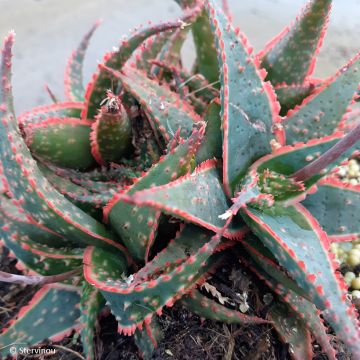

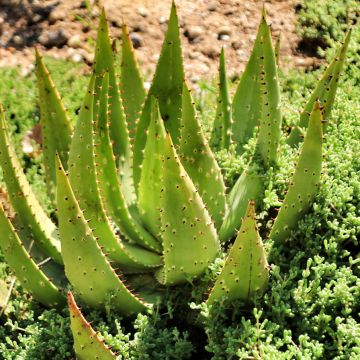
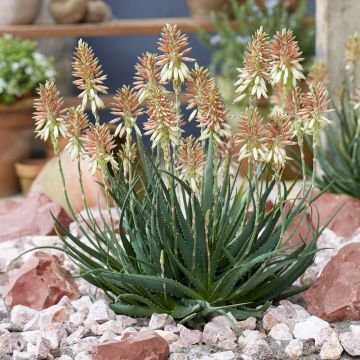


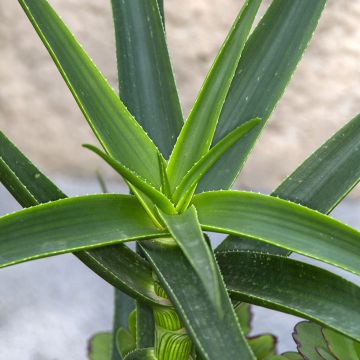


Comments